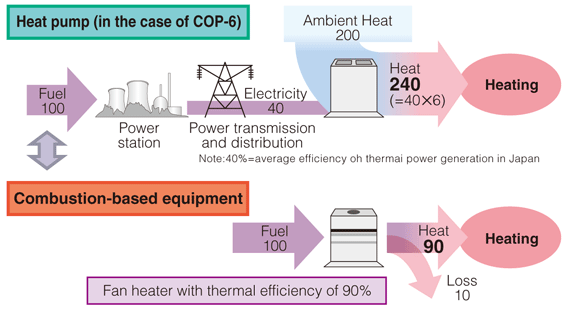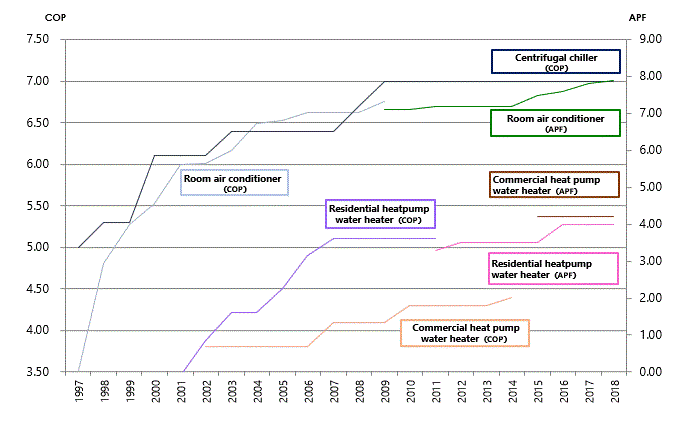Heat pumps collect heat energy several times as large as the amount of electricity inputted to operate them. Moreover, the performance of heat pumps has continued to improve year by year, and the amount of electricity needed to collect the same amount of heat has decreased. As a result, heat pumps make it possible to utilize the amount of heat energy in far excess of the amount of primary energy inputted at power stations, even though the loss at the time of power generation is taken into consideration. If a heat pump of COP6 (= 600% thermal efficiency) is operated by the electricity of 40% generating efficiency, the input of primary energy of 100 produces heat energy of 240 (= 100 x 40% x 600%) that is more than twice as large the inputted energy. Heat pumps have largely broken through the limit of efficiency of conventional combustion-based equipment that cannot produce larger heat energy than the amount of primary energy inputted under the thermal efficiency limit of 100%.

Highly efficient heat pumps consume a small amount of electricity when they convey heat, and CO2 is emitted when this electricity is generated. However, this amount of CO2 is much smaller than the amount of CO2 emitted by directly burning fossil fuels with combustion-based equipment to produce heat.
Moreover, as the electricity to operate heat pump is generated not only by CO2 emitting thermal power generation but also by CO2-free energy such as nuclear power, hydroelectric power generation, wind power, photovoltaic, etc., CO2 emissions from heat utilization can be drastically reduced by the synergistic effect of the progress of carbon reduction is power source portfolio and further improvement of energy efficiency of heat pumps.

